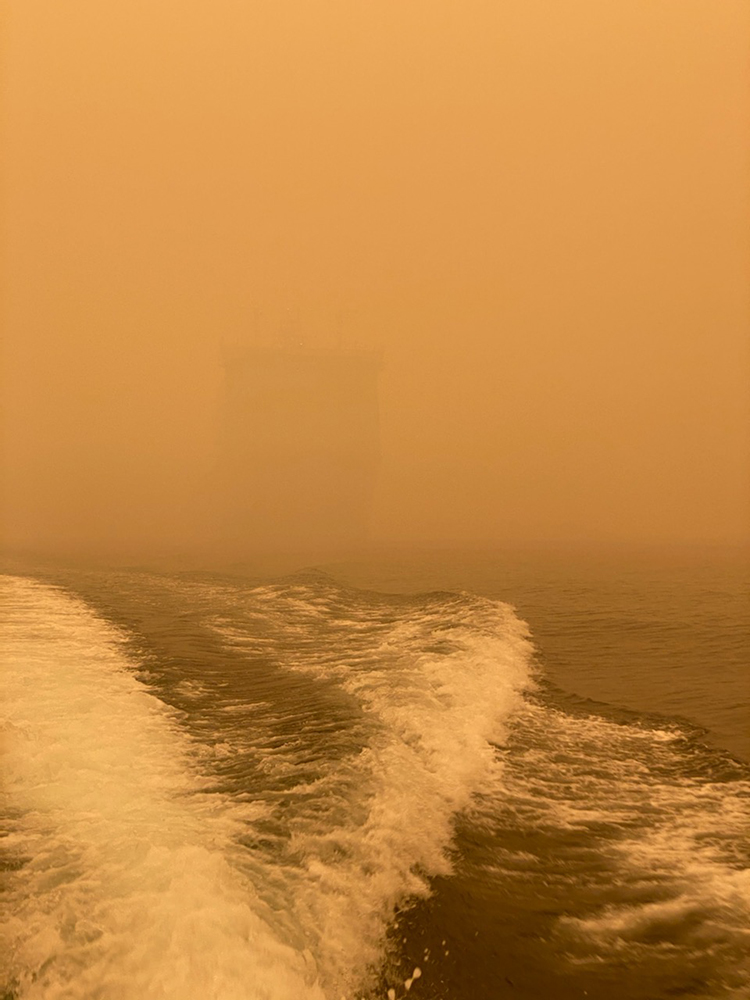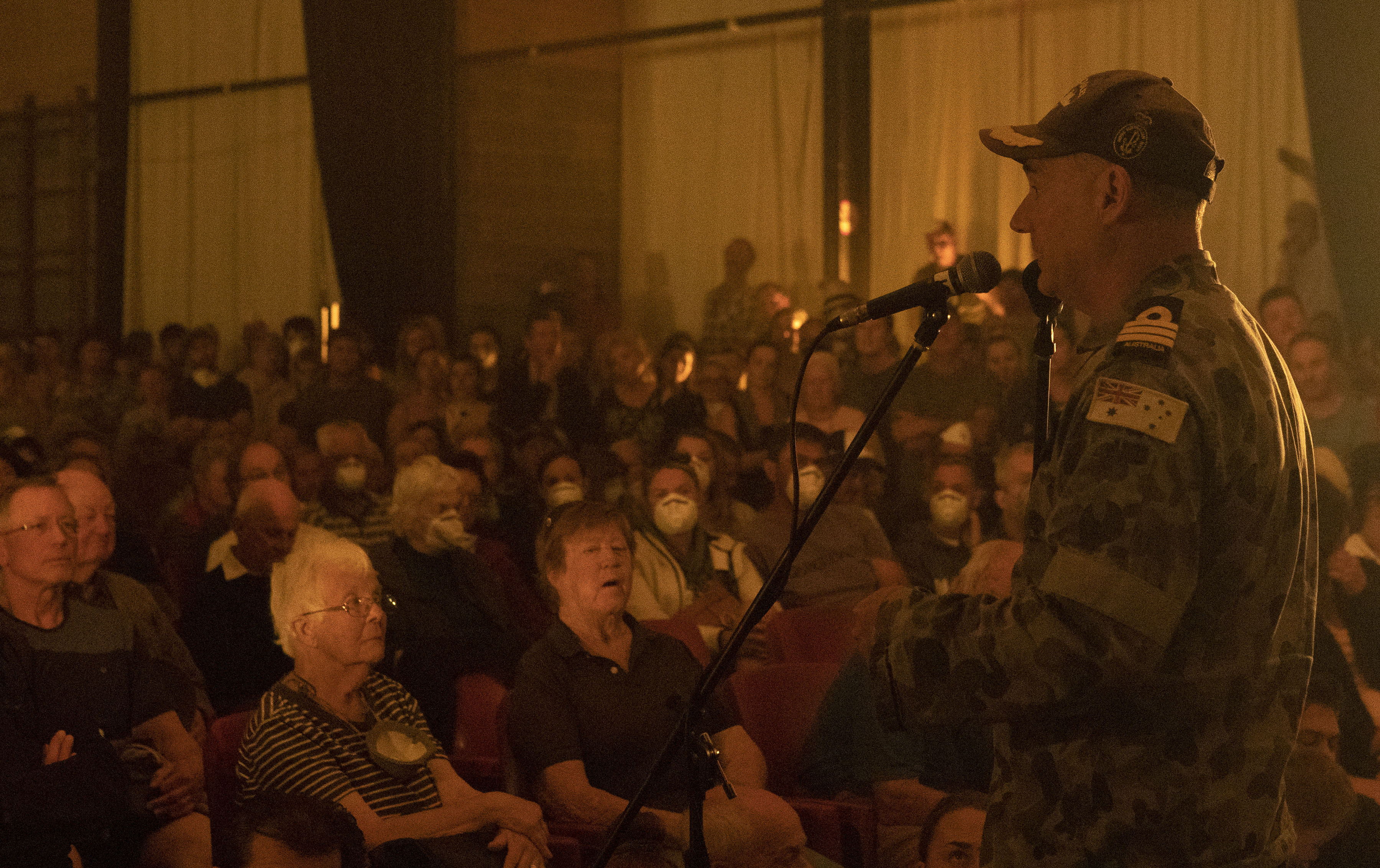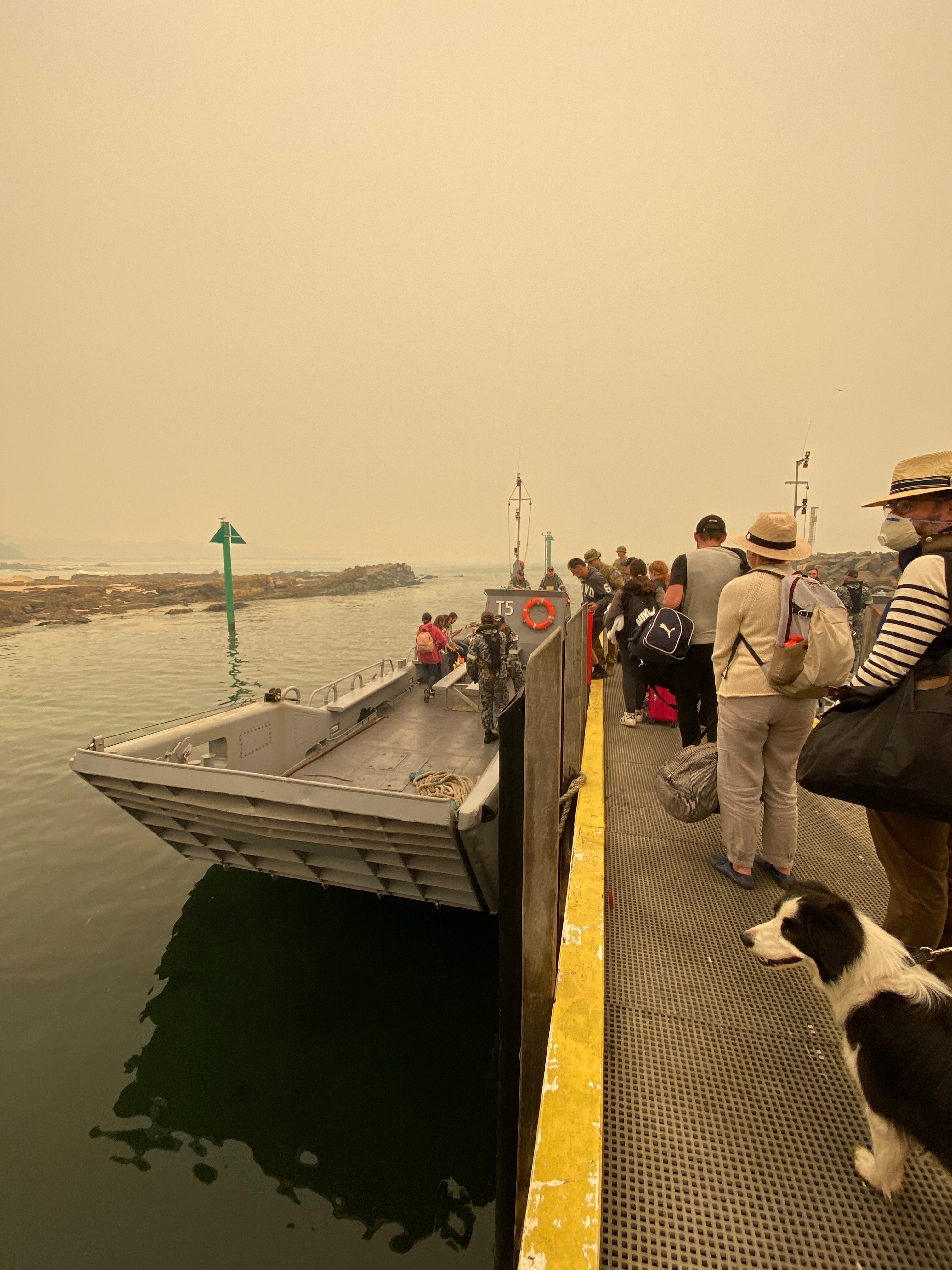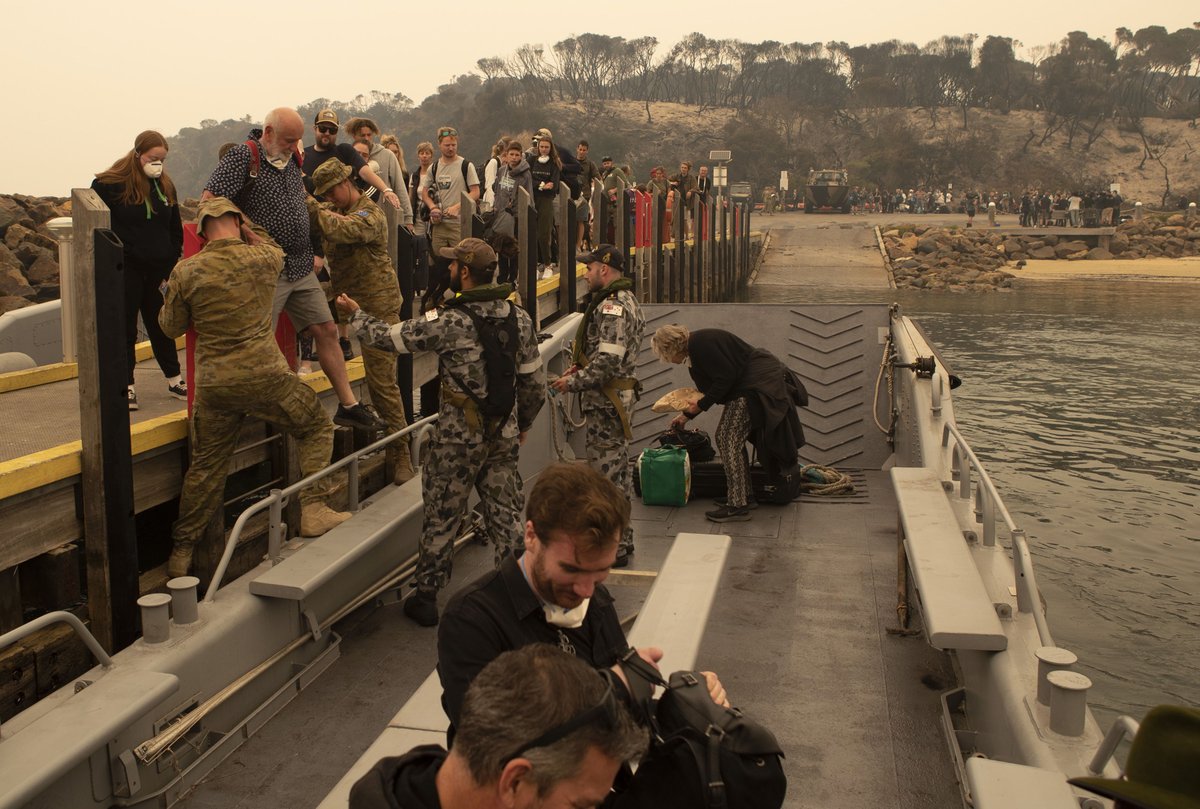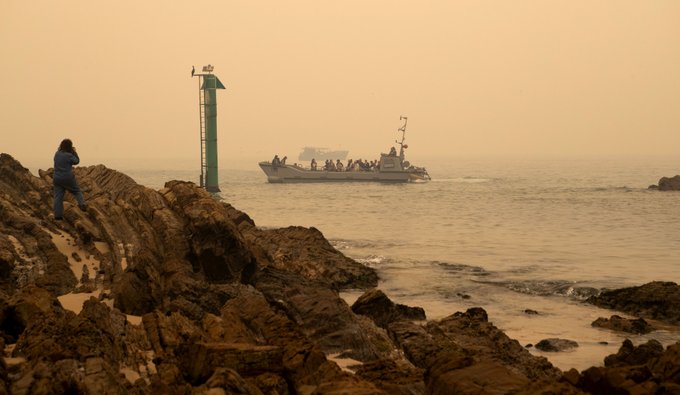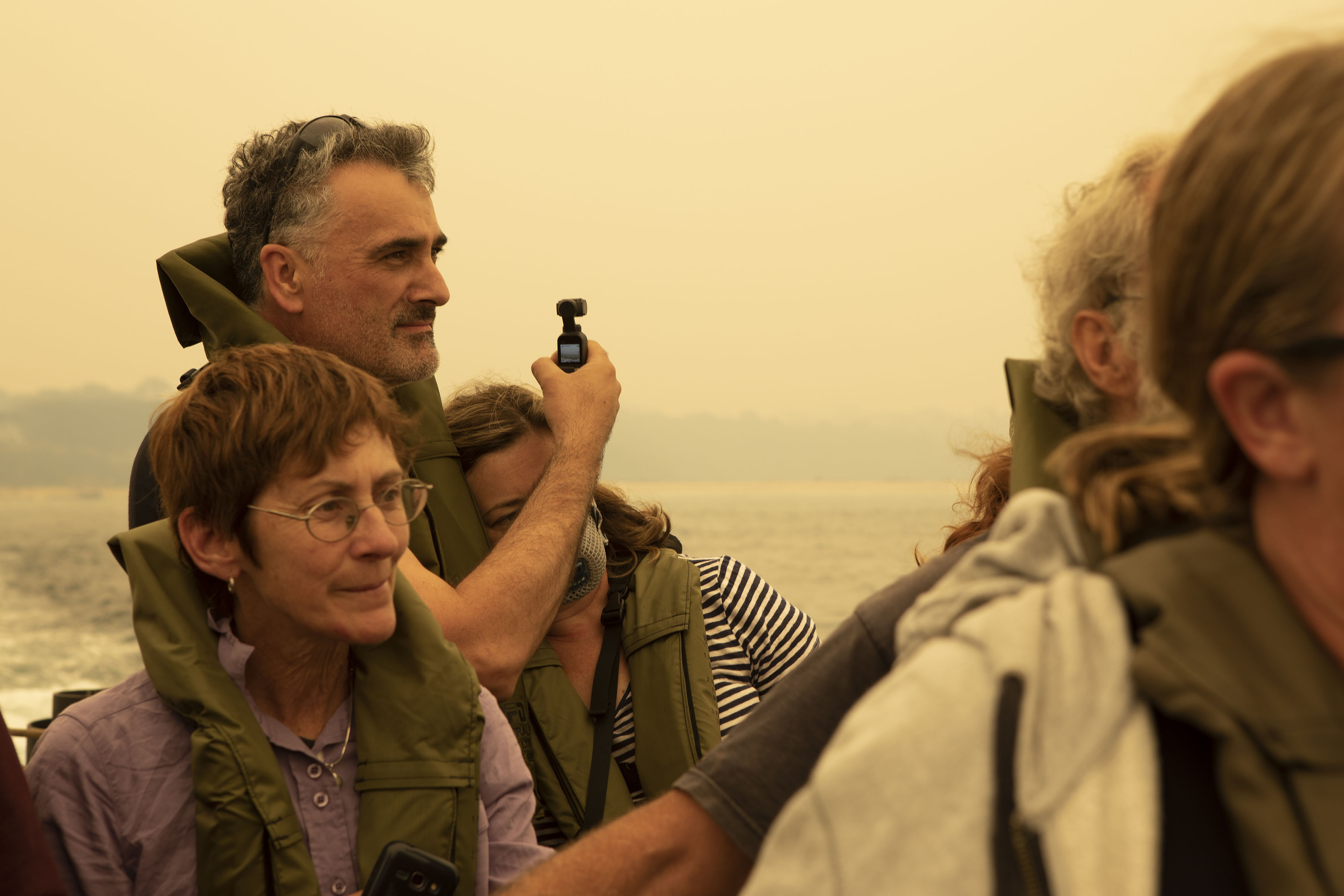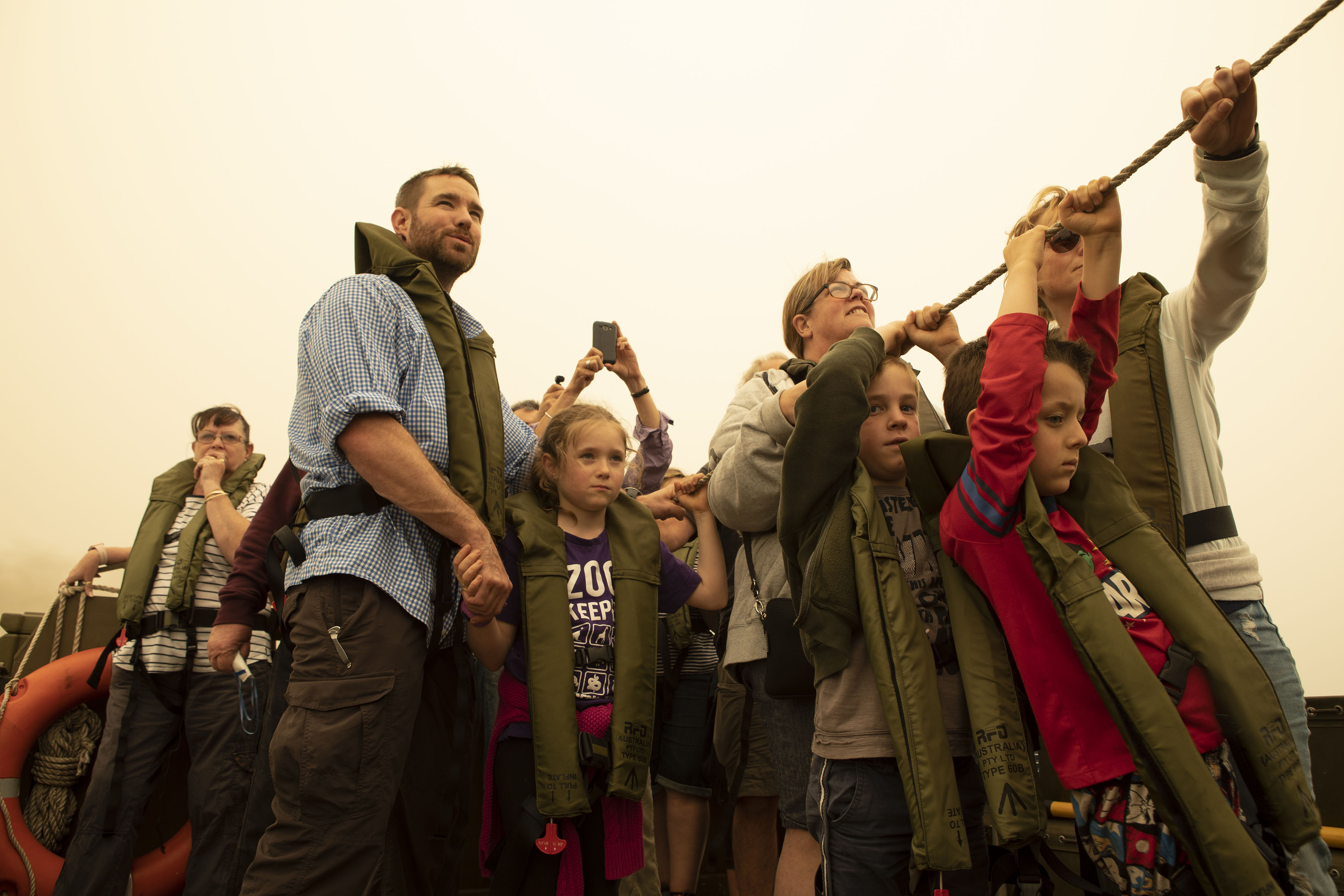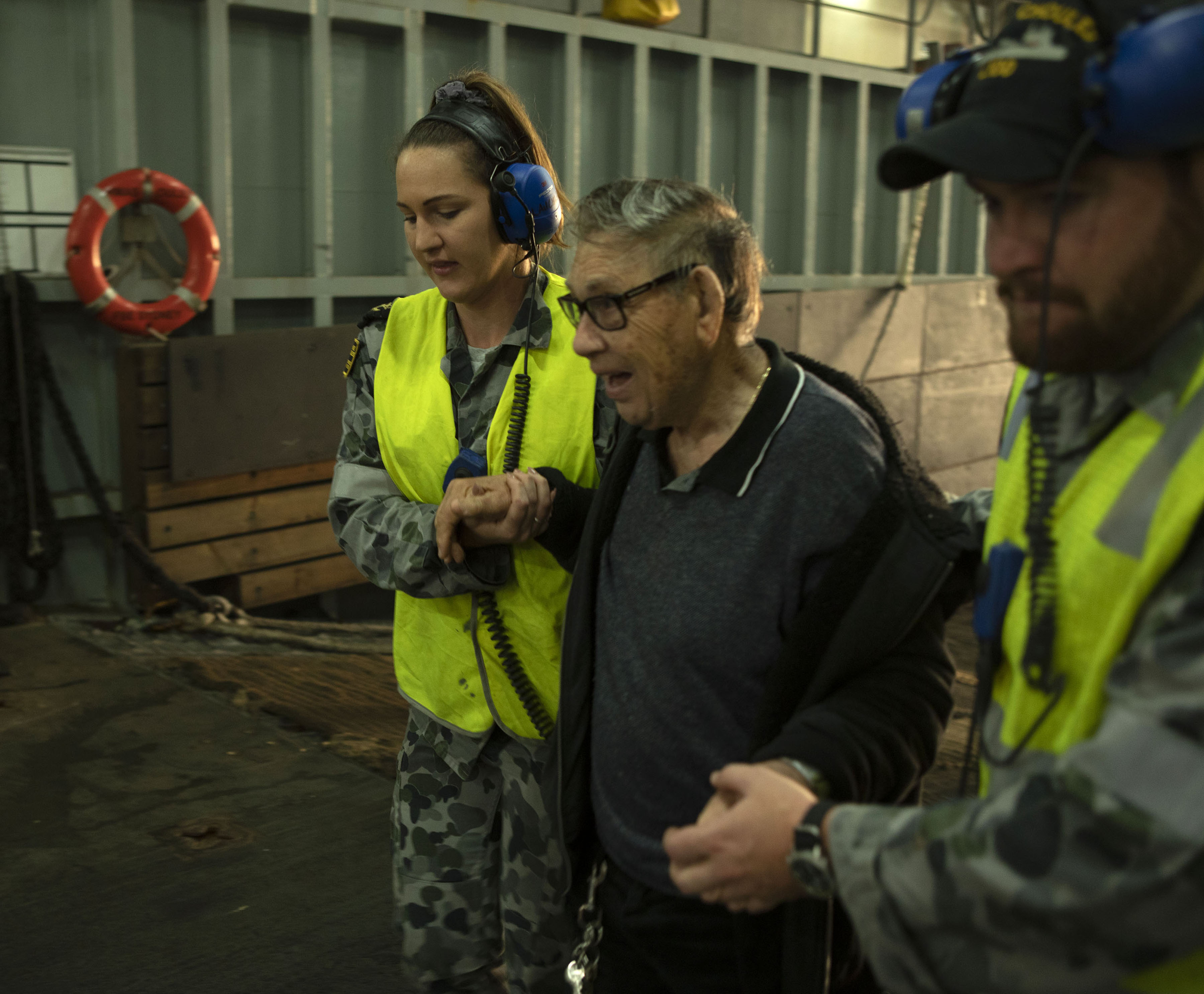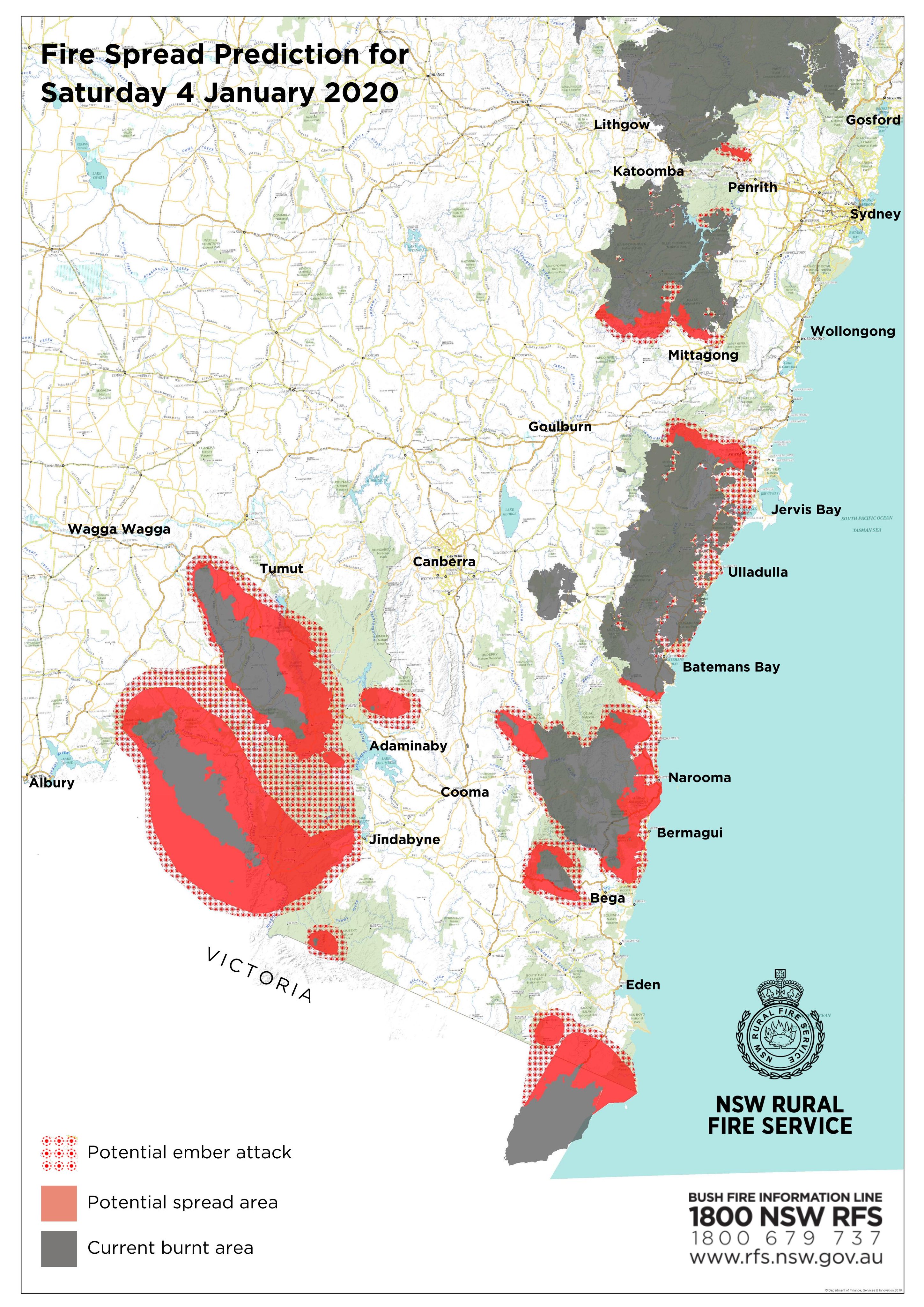Photos: Sealift Evacuation Under Way as Australian Bushfires Continue
On Friday evening, the Royal Australian Navy amphib HMAS Choules departed the fire-stricken community of Mallacoota, Victoria with hundreds of high-priority evacuees on board. According to AIS tracking, she departed at 1830 hours local time, bound for a port on the outskirts of Melbourne. She is expected to offload her passengers on Saturday and may return for more evacuees.
A small number of additional residents were evacuated aboard the M/V Sycamore, a civilian-operated aviation training vessel used by the Royal Australian Navy. The Sycamore has arrived at the port of Hastings, delivering 58 evacuees, two dogs, one cat and one rabbit to safety.
All images courtesy Royal Australian Navy; no captions available
The worst of the fire arrived in Mallacoota the morning of December 30, blotting out the sun with smoke. "This was when we were most anxious," Australian tourist Raphael Korman told BBC. "When there was no sun, and everything was just black there was this real feeling of apocalyptic dread. This is otherworldly - not a natural thing to be happening."
This year's fire season is the worst Australia has experienced in recent memory. The past decade was the continent's hottest on record, 2019 was its hottest year on record, the spring of 2019 (September through November) was Australia's driest on record, and the Australian Bureau of Meteorology's spring Forest Fire Danger Index was its highest on record.

Spring season Forest Fire Danger Index by year, 1950-2019, Australian Bureau of Meteorology

that matters most
Get the latest maritime news delivered to your inbox daily.
13.5 million acres (23,000 square miles) have burned since September, and more damage is likely: it is now the middle of the Australian summer, and meteorologists expect that dry and hot weather conditions will continue for at least four to six more weeks. New South Wales - the country's most populous province - is at the epicenter of the disaster, and on Saturday the danger from fire remained high (below).


